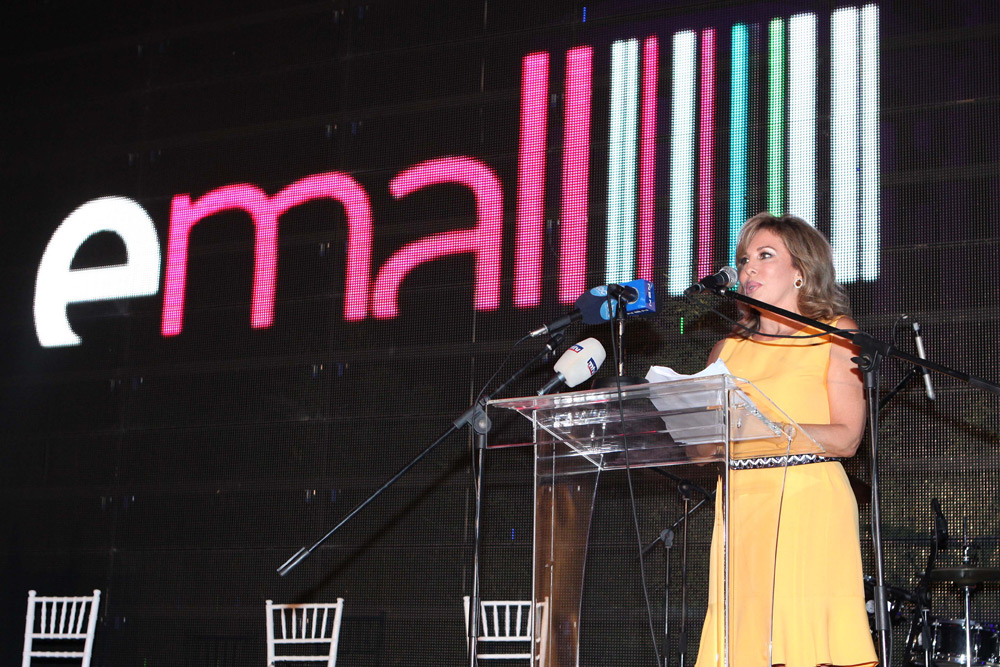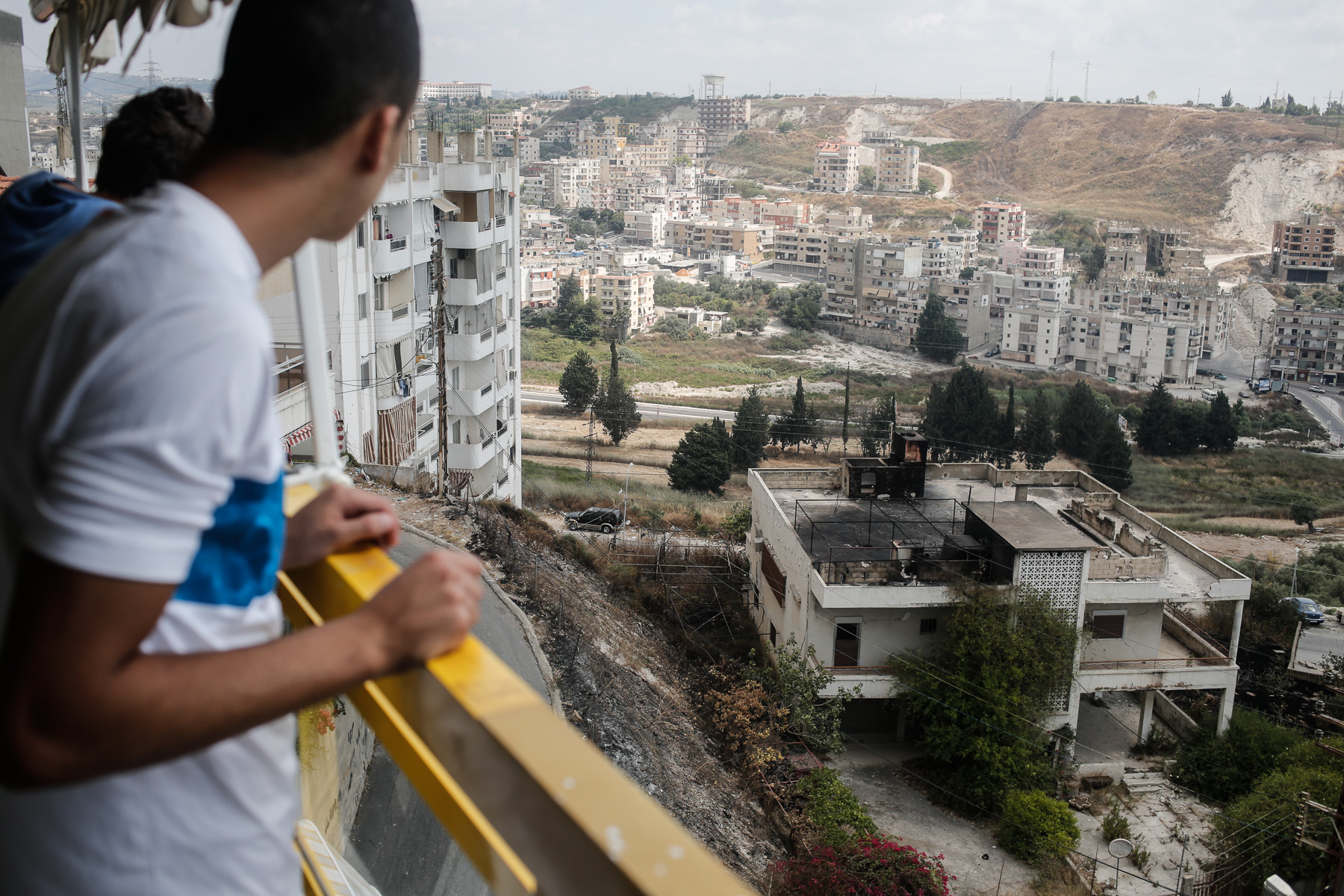To follow a microfinance loan officer around for a day is somewhat akin to taking a ride with Robin Hood, albeit one that operates well within the law. It seems the officer knows almost everyone, and everyone knows him. “I’m famous around here!” exclaims Ismael Jaouni, a loan officer for non-profit microfinance institution (MFI) Al Majmoua as he shows Executive around the working class streets in the Beirut suburb of Jnah.
Despite usually carrying higher interest rates than commercial bank loans, it’s no wonder that microfinance loans are popular. They don’t require collateral, they offer smaller sums than most bankers keep in their wallets and they are convenient, especially for clients in remote locations.
“It’s easy because when I have to repay, I don’t have to go to the bank. It’s like the bank paid me a visit,” said sculptor and artist Elias Khalife. After a lightning strike destroyed his business premises, he got a loan in just a few days and was soon back up and running. The loan officer he contacted at MFI Vitas was a friend of his wife’s.
While product promotion is almost exclusively based on word of mouth and personal relations between loan officers and the communities they serve, microloans seem to be making an impact on the grassroots of Lebanon’s economy.
More than $14 million in loans have been given out over the last four years alone through the USAID-funded Lebanese Investment in Microfinance (LIM) program, according to Joanna Naccouzi, communications and coordination manager at the International Executive Service Corps, which facilitates funding and development for MFIs. This, she claims, has saved over 11,000 jobs, especially in rural areas. It’s empowering less-enfranchised segments of society too, as some 42 percent of the program’s 8,000 loans were granted to women and 41 percent of them to clients between the ages of 18 and 35. And LIM’s efforts make up just a fraction of the nationwide cumulative portfolio of some $120 million to $150 million [see page 26].
Beekeeper
Estephan Badawy, a former Middle East Airlines pilot, started producing honey 13 years ago on the hillsides of the village of Lehfed in Lebanon.
Badawy took a $30,000 Kafalat loan to start his project and recently took a $5,000 USAID-financed microloan from Association d’Entraide Professionnelle (AEP) to buy and fill 40 more hives, bringing his total to 280.
Although he only sells to friends and family, Badawy is confident he’ll find a home for the extra 400 kilograms his hives should yield once they reach full capacity. “Pure honey is like when a man has a beautiful daughter at home; he’s not worried about when she’ll get married,” said Badawy.
His investment should increase his production from 1,600 kg to 2,000 kg per year.Badawy sells his product for around $23 per kilogram and expects to pay off the loan in two and a half years. He is paying annual interest of 10 percent.
Chef
When an industrial accident nearly blinded Jihad Saadeh, he was forced to close his successful car repair business. Saadeh had 12 employees on his payroll, and his children were enrolled at the American University of Beirut.
To provide for his family, Saadeh opened a small restaurant in Lehfed with his wife Raymonda. His four children help out in the summer, and every year he expands the premises.
Today, Saadeh’s labour of love can seat some 700 diners. He recently took a $5,000 USAID-financed microloan from AEP in order to buy a new generator to supply sufficient electricity to cater for a full house. Saadeh said with just a few large events he could repay the debt.
However, Saadeh is a reluctant microborrower: he was persuaded to take the loan by his children but remains wary of debt, an attitude one industry insider said was common among the older generation.
“I don’t like to have a debt,” he said. “If something happens to me today, I don’t want my children to be indebted.”
Sculptor
Sculptor and artist Elias Khalife took a $15,000 USAID-funded microloan from Vitas after his atelier in Ehmej, Lebanon was destroyed in a lighting strike.
Three weeks after the fire, the charred remains are still visible as Khalife works beside a hastily erected structure. Khalife was able to get back up and running quickly, after receiving the money in just 15 days.
“If I hadn’t been able to take out the loan, I would have had to sell some land and would have been unable to fill my monthly orders,” said Khalife, who is the sole producer of statues for the nearby St. Charbel monastery.
Khalife said that despite good access to finance, small rural businesses such as his struggled to find outlets for their products.
Baker
Lucia Saab has been running a humble mana’ish bakery in Chekaa since 2000. She took a $2,000 USAID-funded microloan from Al Majmoua two years ago to expand the premises, create a seating area, and to rebrand her business as Gusto, a full fledged cafe, that she runs with her son, Chalita.
“There’s no other way I could have expanded,” said Lucia, adding that taking a microfinance loan was “a simple procedure. It’s easier than going to the bank, all you need is a guarantor.”
Dekanjia
Majida Moqdad, a mother of three and grandmother of seven, used to clean houses. She desperately wanted to leave her job and set up her own business, but unable to find a source of capital to get started, her project seemed doomed from the start.
“When I was trying to open the shop, I felt suicidal. Then someone told me about Al Majmoua. I called them; Ismael [a loan officer] came here and he helped me,” she said.
In 2010, Moqdad took a microloan of $1,000 to equip and stock her shop. Since then, she’s taken a second loan to pay for a heart operation for her father and a third loan to increase her stock. As each was repaid as scheduled, her interest rates for subsequent loans dropped from 1.5 percent of the principal per month to 1.4 percent and then 1.3 percent.
Saleswoman
Clothing-store owner Layla Jouni was Al Majmoua’s first client in the Jnah area of Beirut, taking her first loan of $1,000 11 years ago.
“When I took the first loan, I bought stock for my shop. Each time I take a loan, I make my stock bigger and bigger,” said Jouni, who said she appreciates the independence these loans have given her. “I didn’t need to get help from anyone,” she said.
Jouni has also borrowed from Al Majmoua to fix up her house and is planning to take out a loan to finance a Hajj pilgrimage next year.
Shopkeeper
Hayat Kheir Imriri recently took a microloan of $800 dollars to buy stock for her store in the Sabra Palestinian refugee camp. The loan was taken from Al Majmoua. She is shown here holding a receipt of repayment.
Mechanic
Mechanic Jihad Rashid has taken six microloans from Al Majmoua over the last 6 years in order to pay for his children’s education.
This has allowed Rashid to pay the school fees annually; if he paid monthly, he says, the school would charge him three times more interest than that offered by Majmoua, which began at 1.5 percent of the principal per month. Due to successful repayments Rashid now pays a lower monthly rate of 1.3 percent.

![Tuesday[39]](https://www.executive-magazine.com/wp-content/uploads/2014/01/Tuesday39.jpg)









![Monday[39]](https://www.executive-magazine.com/wp-content/uploads/2014/01/Monday39.jpg)


